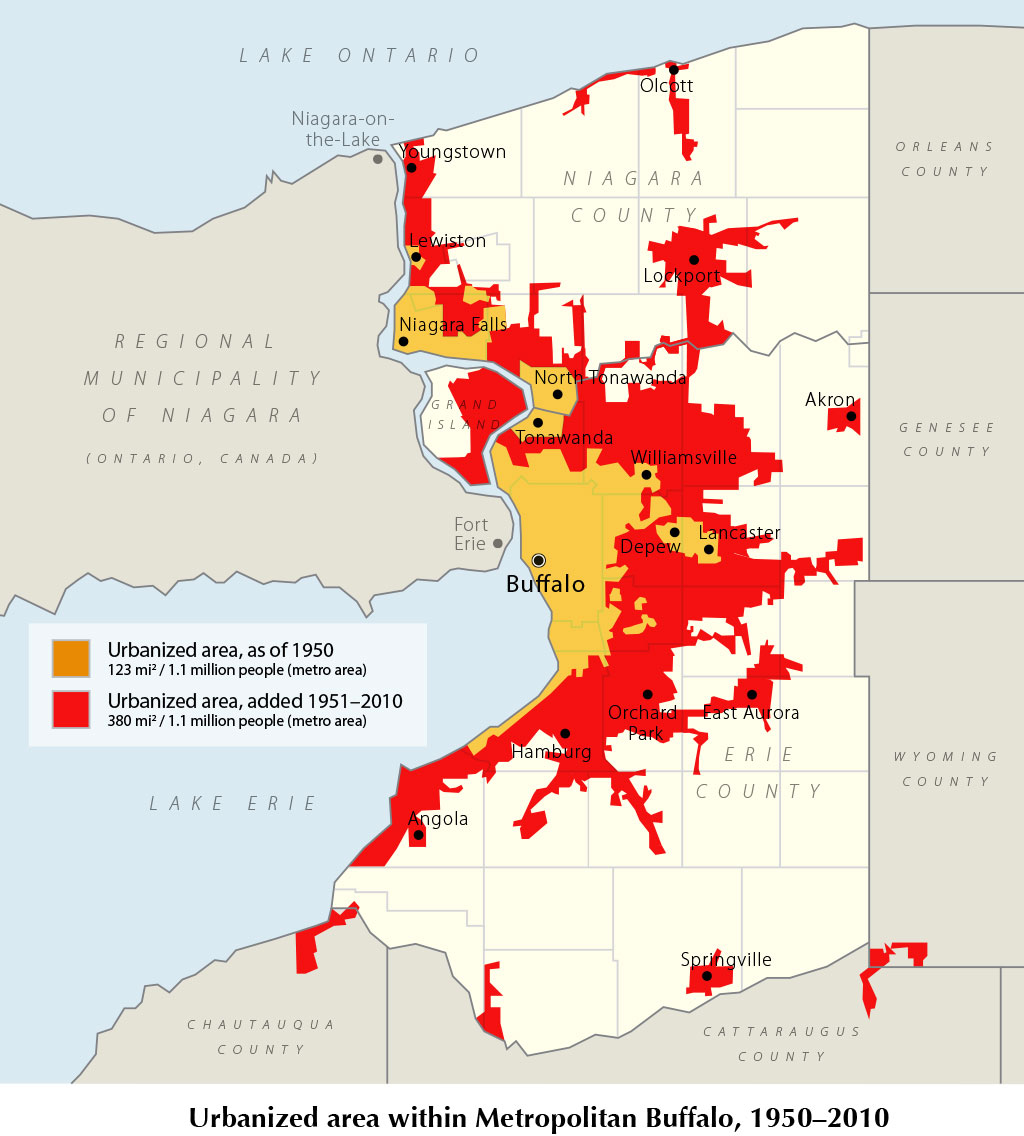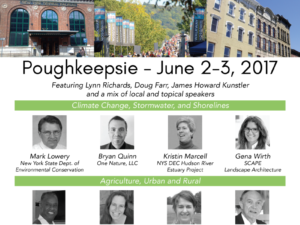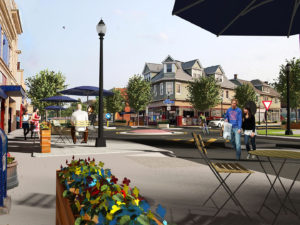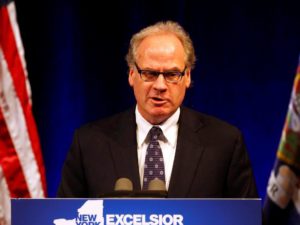
“Buffalo is experiencing a rejuvenation of sorts, and there is reason to think the region’s long decline is ending,” writes Chuck Banas for No Boundaries. “New demographic trends belie the trope that the region is getting older and poorer. For the last decade, the Buffalo area saw one of the highest increases in college-educated Millennials in the nation, and for the first time in decades, the region’s population is younger than the national average. This has been accompanied by nationally significant gains in income and productivity. But not all the news is good. While there is a renewed sense of civic confidence, the regional recovery is distributed unevenly and still appears fragile.” “Another old trope common to Buffalo and the rest of the Rust Belt is that of population loss. But this has actually never been quite true. The Buffalo region has maintained roughly the same population since the 1950s. Yet during this period, the area developed over three times the amount of land for the same number of people. This created a series of complex problems, including a larger tax burden; neighboring cities and towns competing with each other for smaller slices of the same pie; a massive racial and economic divide; and urban decay not just in the central city, but creeping into Amherst, Lackawanna, Cheektowaga, and West Seneca. Other cities, like Portland, OR, share similar foundations to Buffalo, but have made better choices regarding regional planning after deindustrialization. By looking at Portland from the 1970s until today, we in Metro Buffalo can start to tackle the similar challenges of city-building and sprawl with comparable success.” “…Metro [Portland] limited the tax base-depleting factors of sprawl and blight, and allowed Portland to make significant, longterm, strategic investments. Perhaps the most important investment is regional transit and bicycle infrastructure, making the area one of the best connected, most livable areas in the country.” “This helped build a valuable, dynamic, and sustainable economy. Portland became one of the most desirable and attractive cities for young entrepreneurs and other business.Strong regional governance has not only helped Portland recover from decline, but so far it has kept it from becoming a victim of its own success.”
Over the last sixty years, Buffalo didn’t shrink, it spread-out. The region has maintained roughly the same population since the 1950s, yet during this period, the area developed over three times the amount of land for the same number of people. (Image credit: No Boundaries / Chuck Banas)
Over the last sixty years, Buffalo didn’t shrink, it spread-out. The region has maintained roughly the same population since the 1950s, yet during this period, the area developed over three times the amount of land for the same number of people. (Image credit: No Boundaries / Chuck Banas)







